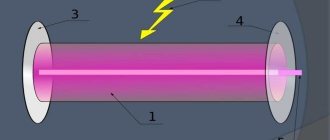How often to start the generator when idle?
Elektron72
I am engaged in the installation and maintenance of power plants. Regarding downtime, I recommend that you start the generator: in winter, once a week, and in summer, once a month, and, at the same time, give it a good load! If the generator is difficult to start, replace the gasoline with fresh one, pour the old fuel into the car and drive.
Traks
I conduct test runs of the power plant spontaneously. After the generator has been grinding for 2-3 minutes, I give it a load - I connect a construction hair dryer with a power of 1.5 kW. I turn off the device after five minutes, as soon as the engine crankcase becomes warm. I change the oil in spring and autumn.
Lekcei4
I put my generator in the garage extension. There is an electric start. The body is insulated. Once a month I turn on the power plant. I let it run for a bit and turn it off. Important point! I turn off the generator by turning off the fuel supply valve until the gasoline is completely exhausted. This will prevent the carburetor from coking.
We increase power with our own hands
The voltage regulator should not allow values to drop below 13.8 Volts. Such indicators can be achieved using an additional diode, which is included in the electrical circuit. This element is not used in the on-board network at normal values.
If there is not enough electricity, then to activate the diode it is enough to turn on the toggle switch. With the help of such manipulation, the voltage regulator is deceived.
When choosing and installing a diode, you need to consider the following important points:
- the device must produce at least 5 Amperes;
- strictly observe polarity when connecting;
- this element must be placed outside the generator to prevent it from overheating;
- It is better to choose the silicon version of the diode.
To complete the work you will need:
- terminals with male-female wires;
- heat shrink insulation;
- diode.
First, connect the terminals to the diode ends. Solder the “mother” terminal to the negative terminal (cathode) with a strip on the body, and solder the “male” terminal to the positive (anode) terminal.
Having completed the above steps, you need to assemble the circuit to the end and check the electrical parameters when the generator is running. As practice shows, this method, despite its simplicity, is distinguished by its reliability and reliability.
A cheap way to increase the power of a generator from STOshnik
During the winter season, many car owners experience a drop in network voltage. Most often, the responsibility for this lies with the generator, which cannot operate at full capacity.
How to solve this problem without harming the overall electrical system of the car is of interest to motorists. The easiest and safest way is to install a diode with a toggle switch. This operation can be done by almost every car enthusiast. Despite its simplicity, this reliable method is effective and reliable.
What are they good for?
Gasoline generators are used during emergency shutdowns as a replacement for the current source.
They help out owners of dachas and construction sites where power has not yet been supplied, and provide a decent living for geologists, rangers, reindeer herders, drillers - everyone who is forced to work in hard-to-reach areas. A good assistant for home craftsmen in the country or in the garage. They make it possible to replace manual labor with mechanized labor even where the use of electricity is not available. Lighting, electrical appliances and tools, and household appliances are connected through the generator. When connecting devices, pay attention to the permissible voltage - if the generator is designed for 127 Volts, then devices manufactured for 220 Volts will not be able to operate with the declared power. The uninterrupted operation time of a gas generator depends on the power of the device, the volume of the fuel tank, and the load size
There are models capable of operating under load for up to one and a half thousand hours.
The uninterrupted operation time of a gas generator depends on the power of the device, the volume of the fuel tank, and the load size. There are models that can provide operation under load for up to one and a half thousand hours.
Which battery should I put on the generator so that the station starts up without problems in the cold?
Elektron72
If the generator is standing outside in the cold, then I recommend replacing the standard gel battery with a regular car acid battery of higher capacity. To charge the battery, if the ATS (automatic transfer switch) does not have its own charger, connect an ordinary 2-3 A switching power supply and set it to 13.7 V.
At temperatures of -30 degrees Celsius and below, almost all gasoline generators do not start or start with difficulty.
If you want a guaranteed start of the station in severe frosts, take a car battery with a capacity of 55-65 Ah. Or place the generator in an insulated and heated place.
Gen_Master
For a gasoline engine, for a confident start in the cold, it is important that the air filter is clean, the fuel is fresh, the battery is charged, the spark plugs are not flooded, and the oil is selected according to the season
Basic installation recommendations.
Gas generators are installed both indoors and outdoors. If the unit is installed outdoors, it is necessary to protect it from aggressive factors such as precipitation or dirt. The electric unit can be placed in a barn or other outbuilding. Such placement is also optimal due to such properties of the electric generator as fire hazard, noise and the presence of harmful exhausts.
When placing the gas generator inside a residential building, it can be installed in a ventilated basement or garage.
To eliminate vibrations, the generator must be installed on a perfectly flat surface. There are certain requirements for the premises. So, there should not be high humidity here. Otherwise, a short circuit may occur. The generator is installed in a dry place where the sun's rays do not reach. It is necessary to organize high-quality ventilation and air conditioning in the room; this is required for cooling gasoline generators with air ventilation.
It is necessary to exclude the appearance of open flame sources near gas generators. This is necessary in order to minimize the risk of fire, because the generator uses highly flammable fuel. Smoking and working with open flames should not be allowed near gasoline-powered electrical units.
Generator selection
When choosing a generator, you need to start by determining the required power. This question is not as simple as it seems, since consumers in alternating current circuits have both active (ohmic) resistance and reactive (capacitive and inductive), and often before reaching the operating mode they have energy consumption significantly higher than the nominal one.
The simplest example: we need a portable generator from which we will power an 800 W rotary hammer. Its electric motor has a significant inductive component of resistance, which, when calculating energy consumption, is described by the so-called power factor, denoted as cosφ. If for a load that does not have reactance it is equal to unity, then it increases with increasing capacitance or inductance of the load. In addition, we must not forget that the generator itself has significant inductance.
It is precisely because of the inductive resistance of the generator windings that its power is indicated not in watts, but in volt-amperes at a given power factor: for example, a 5 kVA gas generator with its own cosφ = 0.8 actually has a maximum power of 4 kW.
Thus, if it is necessary to power an 800-watt electric motor with its own cosφ = 0.5, we will need a generator capable of delivering a power of 1600 W for a long time, that is, its peak power, indicated in the characteristics, should be one and a half to two times greater. Taking into account the losses in the generator itself, for our hammer drill we will have to purchase a 4 kVA gas generator.
At the same time, if we need to power lighting and an electric heater (consumers that have no reactance) from the same generator, their total power can be twice as large with the same load on the generator itself.
Next, we will determine the operating time of the generator. As already mentioned, for long-term operation, a diesel power unit is preferable - therefore, when considering a unit for constantly supplying energy to a building (private house or small workshop), it is worth considering this option, especially taking into account the above-described calculation of the required generator power - a gasoline unit will be too voracious. Since it will be impossible to constantly monitor a long-running generator, it must be equipped with a protective device that shuts down the engine when the engine oil level or pressure drops.
In some cases (the need for frequent transportation, especially manual transportation), the lighter weight of a gasoline generator may be a more important factor than the efficiency of a diesel one. Also, a gasoline unit is a more preferable option for short-term use - in this case, efficiency and resource play a much smaller role than the price of the unit itself.
To provide emergency power to your home, it is worth considering the option of connecting a generator designed to use natural gas to the gas network.
How to choose a generator for your home: power calculation, phases, engine type
Finally, you asked yourself this question - what will happen if the lights are turned off? There are a lot of unpleasant things - the house will defrost, information will disappear, production will lose power, a pump, machine will stop working, etc.
And... You decided to acquire your own independent source of electricity (generator, diesel generator, mini-electric power station, gas generator, etc.).
Do you want to fully provide yourself with electricity or only provide the most basic needs: lighting, refrigerator operation, heating and/or alarm system support, water pump, etc.?
Therefore, the first question will be the rated electrical power (PRP) of the generator (generator set) you are purchasing.
You must determine for yourself which consumers will be connected to the generator at the same time. It is best to check the power of consumers using their passport data.
To calculate the power of the selected generator, take triple the rated power of the electrical appliance with the largest electric motor, add to it the power of all other active consumers (lighting, electric stove, kettle, etc.).
The resulting power must be multiplied by the one-time use coefficient (or demand coefficient) equal to 0.6-0.8 - this is the power of the generator you need.
The second question that you need to decide: should your generator (diesel generator, gasoline generator) be 1-phase (230 V) or 3-phase (400 V)?
If you do not have 3-phase consumers at your site and a 1-phase network is connected to your house (dacha), then the choice here is clear: a 1-phase generator.
If you do not have 3-phase consumers, but a 3-phase network is connected to your house (dacha), then you still need a 1-phase power supply unit, since having purchased a 3-phase one, you will be forced to “parallelize” the output into three 1-phase ones. phase lines by analogy with the supply from the external network.
If you have a synchronous generator, then the difference in the load of each winding should not exceed 30%, if the generator is of an asynchronous type, then no more than 60%, which is better, but not entirely good, since it is a big inconvenience to constantly calculate, how many kilowatts and to which phase (generator winding) must still be connected or additionally loaded until an approximate uniformity of phase loading is observed.
And only in the case when there are 3-phase consumers, it is necessary to purchase a 3-phase PG.
The third question is, what engine should your generator be equipped with - diesel or gasoline?
They often ask: “Which is better?”, “What do you recommend?”
This question cannot be answered unequivocally. Each type of engine has its own advantages.
However, if we are talking about electrical power above 15 kVA, then it is impossible to find a generator with a gasoline engine on the power plant market, and diesel engines in this power range are mostly liquid cooled.
— The speed of rotation of the motor shaft is important. For gasoline engines, which are almost all air-cooled, it is 3000 rpm, as is the case for air-cooled diesel engines.
A diesel engine with liquid cooling (antifreeze) has an engine shaft rotation speed of 1500 rpm. Such engines are capable of operating around the clock.
And the noise from them is less than from the same, but spinning twice as fast, so-called “backup generator”, the resource of which is much shorter due to the high speed of rotation of the shaft.
By the way, all gasoline mini-power plants, as well as air-cooled diesel generators, are backup.
- Noise. There are no absolutely silent generators. The fight against noise is traditional - an enlarged muffler and a noise-proof casing. But at the same time, the price increases significantly, as well as the dimensions and weight.
But I want it to launch itself - is this possible?
Autostart. All generators with an electric starter can be equipped with an autostart system. Then human participation in the event of a power failure is reduced to monitoring the fuel.
NO momentary power loss.
Well, one more thing - if it is important that there is no loss of power supply even for seconds, then you need to additionally install a UPS (uninterruptible power supply or UPS).
Features of a car generator
After turning the ignition key, current flows into the field winding. Here it is controlled by a voltage stabilizer, which is powered by the rectifier section.
Today they are connected according to two main schemes. The older version is reliable, works stably, maintaining voltage at approximately a constant level. The updated scheme has many disadvantages.
The uniqueness of the automobile unit is that it generates electricity by converting the mechanical energy of the rotating engine crankshaft, which is connected to the generator pulley by a belt. At the same time, the engine speed is not a constant value.
In this case, regardless of engine speed, the voltage should always remain within approximately 14 Volts. Otherwise, it will negatively affect both the battery and the electrical circuit. Overcharging and undercharging will have a detrimental effect on the battery.
The operating principle of electronic speed stabilization is based on the dependence of the capacitor resistance on the current frequency. The diagram shows a stabilizing winding (L3) loaded onto a capacitor (C1). When operating at rated load, the output voltage is 220 V with a frequency of 50 Hz. Since the frequency of the output voltage directly depends on the number of revolutions per second, a change in the rotation speed of the generator rotor causes an unambiguous change in the voltage frequency on all windings of the generator.
The resistance of a capacitor depends on the frequency of the applied voltage. The higher the frequency, the lower the resistance. As a result, the current through the stabilizing winding varies depending on the load on the generator. As the load decreases, the number of revolutions increases, respectively, the frequency increases and the resistance of the capacitor decreases.
Electrical stabilization operates over a small range of changes, so the main adjustment function is assigned to the mechanical regulator. Here the range of adjustments is much wider, but at the expense of reaction speed. The internal combustion engine has inertia, and the change in its speed is slightly delayed when adjusting the throttle valve (this characteristic of the engine is called throttle response). Sudden load surges can cause the control system to oscillate.
Such a regulation system is difficult to make on your own, and an electronic one requires modification of the generator. The advantage of such a control circuit is the production of sinusoidal voltage with minimal distortion of the signal shape.
Inverter Gasoline Generator
The alternating voltage of the generator is supplied to the rectifier, and then to the transistor converter, the output of which is a stabilized voltage of the required value. The presence of a rectifier removes restrictions on the stability of the generator frequency, and the transistor converter generates voltages regardless of the load size. The disadvantage of inverter generators is their high cost and distortion of the output voltage waveform.
Assembly of the structure and adjustment
The gasoline generator is assembled on a suitable platform. During assembly, the main thing is to ensure strict parallelism and location of the generator and engine pulleys in the same plane. Otherwise, the belt may slip off and cause increased wear. The distance between the pulleys is chosen so that the belt is tensioned and does not slip during operation.
Important! Don't overdo the tension. This will cause a decrease in efficiency and wear on the belt and pulleys, and most importantly, the bearings of the engine and generator shafts.
Having another pulley, even if it is of small diameter, you can make a belt tensioning device using a spring of the required elastic force.
The gas tank is placed in the highest part of the structure so that gasoline can flow by gravity into the carburetor. It is important to prevent the tank from heating up with the heat of a running engine. If necessary, provide thermal insulation using asbestos pads.
Important! Asbestos dust is not toxic, but it can be harmful to the lungs, so you need to wear a respirator when working with asbestos.
Don't forget the fuel filter.
The assembled structure should ensure ease of starting the engine and access to all elements: carburetor, spark plugs, voltage regulator.
The adjustment consists of setting the required voltage using the generator's standard regulator. Some generators, for example, from Samara and newer cars, have a built-in regulator that does not allow adjustment.
If the voltage is below the permissible level, the uninterruptible power supply will not start, giving a signal that the battery is severely discharged. A high value may cause damage to circuit elements.
As you can see, assembling a home gas generator is quite feasible. A self-assembled gas generator can work no worse than a factory one, but you should know that this can only be done if you have at least some of the components. Manufacturing a power plant from scratch in the complete absence of parts will lead to costs exceeding the purchase of a finished structure.
All structural elements must be secured to a rigid base. For the base, the easiest way is to make a frame from steel corners 50x50 mm. The frame must have mountings for the engine, generator, converter and gas tank.
To reduce vibrations, all elements must be secured through shock-absorbing pads made of thick rubber.
Principle of operation
In inexpensive industrial gas generators, frequency and voltage adjustment is performed in two stages. The first stage is mechanical. The principle of its operation is based on the fact that as the electrical load increases, the engine speed drops. The engine speed sensor is mechanically connected to the carburetor throttle valve, so any change in speed is compensated by adjusting the throttle position automatically. The second stage of adjustment is carried out electronically. The figure above shows the circuit diagram of a typical inexpensive gas generator.
The operating principle of electronic speed stabilization is based on the dependence of the capacitor resistance on the current frequency. The diagram shows a stabilizing winding (L3) loaded onto a capacitor (C1). When operating at rated load, the output voltage is 220 V with a frequency of 50 Hz. Since the frequency of the output voltage directly depends on the number of revolutions per second, a change in the rotation speed of the generator rotor causes an unambiguous change in the voltage frequency on all windings of the generator.
The resistance of a capacitor depends on the frequency of the applied voltage. The higher the frequency, the lower the resistance. As a result, the current through the stabilizing winding varies depending on the load on the generator. As the load decreases, the number of revolutions increases, respectively, the frequency increases and the resistance of the capacitor decreases. The current through the winding (L3) increases and its braking value on the generator rotor increases. Thus, the rotation speed is adjusted continuously and instantly while the generator is running.
Electrical stabilization operates over a small range of changes, so the main adjustment function is assigned to the mechanical regulator. Here the range of adjustments is much wider, but at the expense of reaction speed. The internal combustion engine has inertia, and the change in its speed is slightly delayed when adjusting the throttle valve (this characteristic of the engine is called throttle response). Sudden load surges can cause the control system to oscillate.
Such a regulation system is difficult to make on your own, and an electronic one requires modification of the generator. The advantage of such a control circuit is the production of sinusoidal voltage with minimal distortion of the signal shape.
More complex generators are made using a double conversion inverter circuit (Fig. below).
Inverter Gasoline Generator
The alternating voltage of the generator is supplied to the rectifier, and then to the transistor converter, the output of which is a stabilized voltage of the required value. The presence of a rectifier removes restrictions on the stability of the generator frequency, and the transistor converter generates voltages regardless of the load size. The disadvantage of inverter generators is their high cost and distortion of the output voltage waveform.
How to increase the power of a gas generator with your own hands? — Handyman's Handbook
> Generators > How to make a gas generator with your own hands
If we look at the structure of a gas generator, we can see that it consists of only two main elements: the engine and the generator.
The whole difficulty of manufacturing a device lies in adjusting the characteristics of the interaction of the components. The quality of the supplied electricity is determined by two quantities - frequency and voltage.
And while stabilizing the voltage value is quite simple, adjusting the frequency is fraught with significant difficulties.
Circuit diagram of an inexpensive gas generator
Asynchronous electric motor as a generator
The article describes how to build a three-phase (single-phase) 220/380 V generator based on an AC asynchronous electric motor. A three-phase asynchronous electric motor, invented at the end of the 19th century by the Russian electrical engineer M.O. Dolivo-Dobrovolsky, has now become predominantly widespread in industry, agriculture, and also in everyday life.
Asynchronous electric motors are the simplest and most reliable to operate. Therefore, in all cases where this is permissible under the conditions of the electric drive and there is no need for reactive power compensation, asynchronous AC motors should be used.
There are two main types of asynchronous motors: with a squirrel cage rotor and with a wound rotor. An asynchronous squirrel-cage electric motor consists of a stationary part - the stator and a moving part - the rotor, rotating in bearings mounted in two motor shields.
The stator and rotor cores are made of separate electrical steel sheets insulated from one another. A winding made of insulated wire is placed in the grooves of the stator core. A rod winding is placed into the grooves of the rotor core or molten aluminum is poured.
Jumper rings short-circuit the rotor winding at the ends (hence the name short-circuited). Unlike a squirrel-cage rotor, a winding made like a stator winding is placed in the slots of a phase-wound rotor. The ends of the winding are brought to slip rings mounted on the shaft.
Brushes slide along the rings, connecting the winding to a starting or control rheostat.
Asynchronous electric motors with a wound rotor are more expensive devices, require qualified maintenance, are less reliable, and therefore are used only in those industries where they cannot be done without them. For this reason, they are not very common, and we will not consider them further.
Under the influence of this EMF, current flows in the short-circuited rotor rods.
Magnetic fluxes arise around the rods, creating a general magnetic field of the rotor, which, interacting with the rotating magnetic field of the stator, creates a force that forces the rotor to rotate in the direction of rotation of the stator magnetic field.
The rotor rotation frequency is slightly less than the rotation frequency of the magnetic field created by the stator winding. This indicator is characterized by slip S and is for most engines in the range from 2 to 10%.
In industrial installations, three-phase asynchronous electric motors are most often used, which are produced in the form of unified series. These include the single 4A series with a rated power range from 0.06 to 400 kW, the machines of which are highly reliable, have good performance and meet world standards.
Autonomous asynchronous generators are three-phase machines that convert the mechanical energy of the prime mover into alternating current electrical energy. Their undoubted advantage over other types of generators is the absence of a commutator-brush mechanism and, as a consequence, greater durability and reliability.
Generator circuit
Portable generator, device and principle of operation.
A portable electric generator has an internal combustion engine, a generator and auxiliary devices. The engine can be gasoline or diesel, depending on the model of the device. In the case of a gasoline generator, gasoline is used as fuel. Getting from the gas tank into the metering device and mixing with air, a flammable mixture is formed. It is supplied to the working cylinder through a valve. It contains the piston, spark plug, intake and exhaust valves. When the piston is at the top point, the spark plug ignites the combustible mixture, it pushes the piston down. The piston is connected to the crankshaft using a connecting rod and as it moves, the piston turns the crankshaft. The engine crankshaft is connected to the generator shaft.
| allgenerator.ru | RUB 10,420 | |
| ups-shop.ru | RUR 25,120 | |
| allgenerator.ru | RUB 18,700 | |
| electro-shop.ru | RUB 9,900 | |
| ups-shop.ru | RUR 43,441.80 | |
| allgenerator.ru | RUB 67,500 | |
| More offers |
An alternator consists of a rotor and a stator. The stator is located in the housing. Inside the housing, there are magnetic cores in a circle on which the excitation winding is wound. The rotor is located on the motor shaft. It consists of a metal base and windings, the ends of which are connected to slip rings. When the shaft rotates, a magnetic field is created in the stator windings, which acts on the rotor windings and creates an electrical impulse in them. It is transmitted through a brush assembly with slip rings to the output of the generator. At high rotation speeds, these pulses form an alternating current.
The energy generated by the generator has a jumping voltage and frequency. In order for the device to generate the required voltage, stabilization devices are used. They receive the voltage generated by the generator and bring its parameters to the required ones. The stabilizer stabilizes the voltage value within the nominal voltage and supplies it to power devices. It is this detail that affects the characteristics of the device.
Gasoline generator device
The principle of operation of a gasoline generator is the same as that of most any power plants, based on the conversion of mechanical energy into electrical energy. An external force rotates the generator armature, and an electrical voltage is induced in the stator windings. In the case of a gasoline generator, the armature rotates the gasoline engine.
So, what is included in a gasoline generator? Main parts:
- Gasoline engine (two- or four-stroke);
- Generator;
- Monitoring, protection and management circuit;
- Speed stabilization device;
- Fuel tank;
- Frame for attaching all components.
How to increase the power of a gas generator with your own hands? – Handyman's Handbook
> Generators > How to make a gas generator with your own hands
If we look at the structure of a gas generator, we can see that it consists of only two main elements: the engine and the generator.
The whole difficulty of manufacturing a device lies in adjusting the characteristics of the interaction of the components. The quality of the supplied electricity is determined by two quantities - frequency and voltage.
And while stabilizing the voltage value is quite simple, adjusting the frequency is fraught with significant difficulties.
Circuit diagram of an inexpensive gas generator
Asynchronous electric motor as a generator
The article describes how to build a three-phase (single-phase) 220/380 V generator based on an AC asynchronous electric motor.
A three-phase asynchronous electric motor, invented at the end of the 19th century by the Russian electrical engineer M.O.
Dolivo-Dobrovolsky, has now become predominantly widespread in industry, agriculture, and also in everyday life.
Asynchronous electric motors are the simplest and most reliable to operate. Therefore, in all cases where this is permissible under the conditions of the electric drive and there is no need for reactive power compensation, asynchronous AC motors should be used.
There are two main types of asynchronous motors: with a squirrel cage rotor and with a wound rotor. An asynchronous squirrel-cage electric motor consists of a stationary part - the stator and a moving part - the rotor, rotating in bearings mounted in two motor shields.
The stator and rotor cores are made of separate electrical steel sheets insulated from one another. A winding made of insulated wire is placed in the grooves of the stator core. A rod winding is placed into the grooves of the rotor core or molten aluminum is poured.
Jumper rings short-circuit the rotor winding at the ends (hence the name short-circuited). Unlike a squirrel-cage rotor, a winding made like a stator winding is placed in the slots of a phase-wound rotor. The ends of the winding are brought to slip rings mounted on the shaft.
Brushes slide along the rings, connecting the winding to a starting or control rheostat.
Asynchronous electric motors with a wound rotor are more expensive devices, require qualified maintenance, are less reliable, and therefore are used only in those industries where they cannot be done without them. For this reason, they are not very common, and we will not consider them further.
A current flows through the stator winding connected to a three-phase circuit, creating a rotating magnetic field. The magnetic field lines of the rotating stator field cross the rotor winding bars and induce an electromotive force (EMF) in them.
Under the influence of this EMF, current flows in the short-circuited rotor rods.
The rotor rotation frequency is slightly less than the rotation frequency of the magnetic field created by the stator winding. This indicator is characterized by slip S and is for most engines in the range from 2 to 10%.
In industrial installations, three-phase asynchronous electric motors are most often used, which are produced in the form of unified series. These include the single 4A series with a rated power range from 0.06 to 400 kW, the machines of which are highly reliable, have good performance and meet world standards.
Autonomous asynchronous generators are three-phase machines that convert the mechanical energy of the prime mover into alternating current electrical energy. Their undoubted advantage over other types of generators is the absence of a commutator-brush mechanism and, as a consequence, greater durability and reliability.
Why do you need to turn off the generator engine by closing the fuel supply valve?
Listen to the advice of a portal user who professionally maintains power plants.
Genmos
Most often, the generator does not start due to a malfunction of the fuel system. Therefore I recommend:
- Keep the carburetor dry.
- Turn off the generator by turning off the fuel valve until all the fuel is used up.
This way, there will be no gasoline left in the carburetor, and the electrical part of the station will cool down more evenly. This is especially useful for three-phase generators. How many times has it already happened? The client bought the station about 5 years ago. I filled the tank with gasoline. Never started the generator or changed the fuel. The lights were turned off, but the generator would not start. A man calls me and asks what should he do? And every time, the reason is in the carburetor and in the fuel system. To maintain the generator’s combat condition, I advise:
- Start it once a month and run it under load for 30 minutes.
- Turn off by turning off the fuel valve.
- Change the oil according to operating hours or once a year.
- When purchasing a new generator, run it at 50% power.
An important nuance: in winter, it is not recommended to keep the generator tank half empty or leave fuel at the bottom. Fill your tank full. Why? At subzero temperatures and sudden thaws, the metal from the inside, if the tank is half empty, fogs up. Then this frost melts and water gets into the gasoline.
Increasing engine power
Therefore, the first thing you need to try to do is increase the engine power. This can be done by filling it with gasoline with a high octane number. The increase in power will not be very significant, and the service life of the engine may be reduced. Another solution is to add a small amount of nitrobenzene to the fuel tank. This will affect the power a little more, but the service life and the likelihood of failure will increase many times over.
Features of a car generator
After turning the ignition key, current flows into the field winding. Here it is controlled by a voltage stabilizer, which is powered by the rectifier section.
Today they are connected according to two main schemes. The older version is reliable, works stably, maintaining voltage at approximately a constant level. The updated scheme has many disadvantages.
In this case, regardless of engine speed, the voltage should always remain within approximately 14 Volts. Otherwise, it will negatively affect both the battery and the electrical circuit. Overcharging and undercharging will have a detrimental effect on the battery.
Choosing a gasoline generator
A gasoline generator is a long-term device, which means you need to choose it carefully, considering all the necessary characteristics.
To select the right generator, it is important to understand that the design of the generator consists of two parts:
- Engine;
- Generator.
Both the engine and the generator have their own parameters that are fundamentally important for the correct choice of device.
So the following fundamentally important parameters are important for the generator:
- Purpose;
- Type;
- Power;
- Voltage;
- Availability of protection.
Important for the engine:
- Engine's type;
- Fuel tank volume;
- Engine start type;
- Gasoline consumption.
For the entire design of a gasoline generator, the following are important:
- Noise level;
- Weight and dimensions.
Let's look at each of the listed parameters in more detail.
Recommendations for use
If you follow simple rules for operating the equipment, it will function stably and for a long time:
- Before turning on, you should make sure that the equipment is in good working order and tight;
- all components must be securely fastened, otherwise the installation will quickly fail due to vibration;
- it is necessary to monitor the oil level and the quality of gasoline;
- Regular cleaning of the air filter is necessary;
- Correct load adjustment is required.











